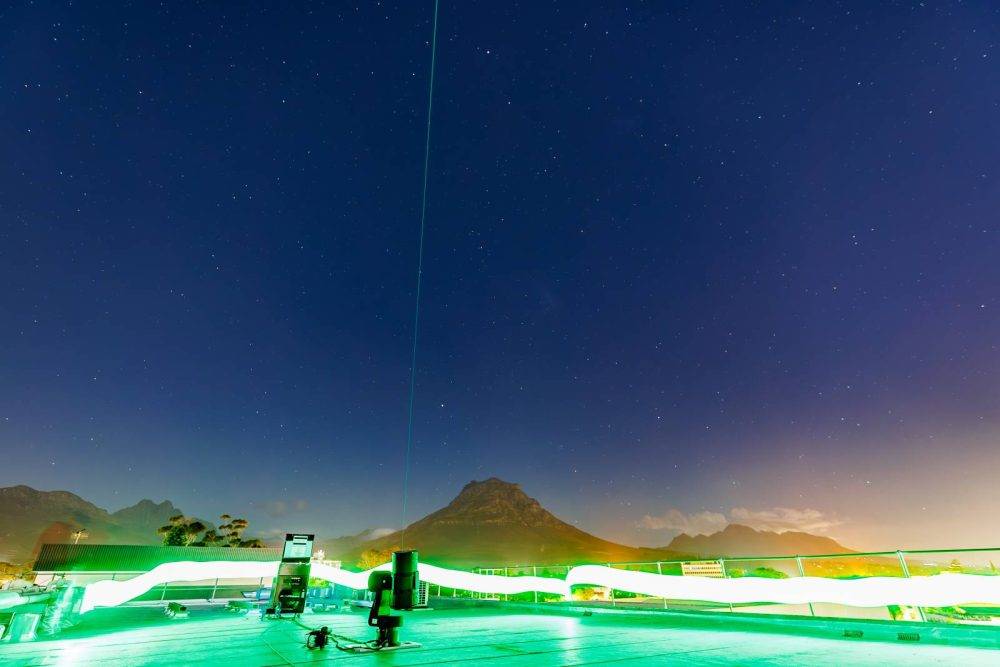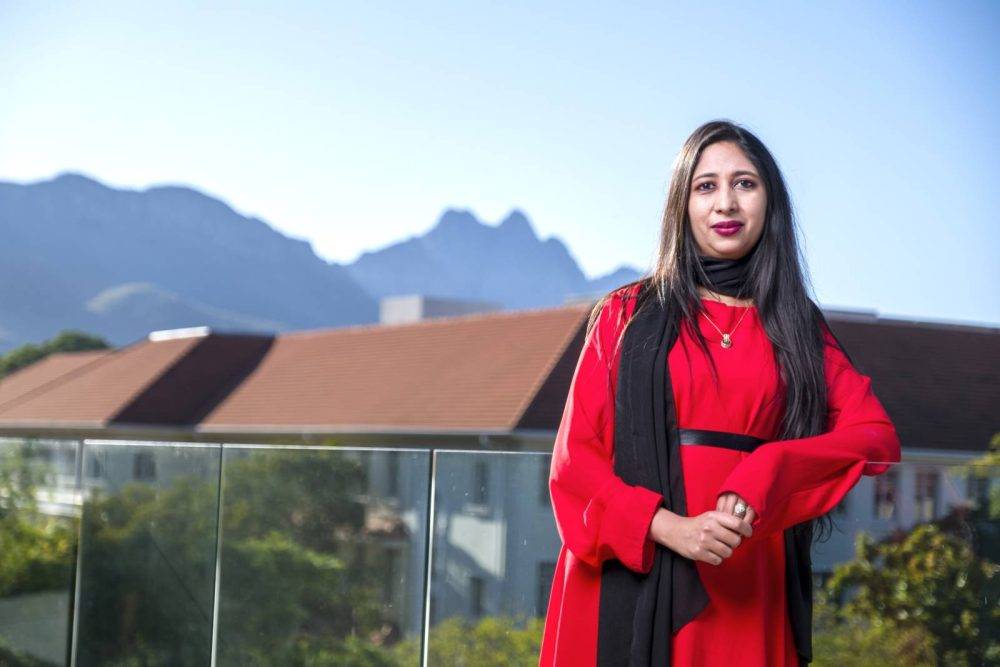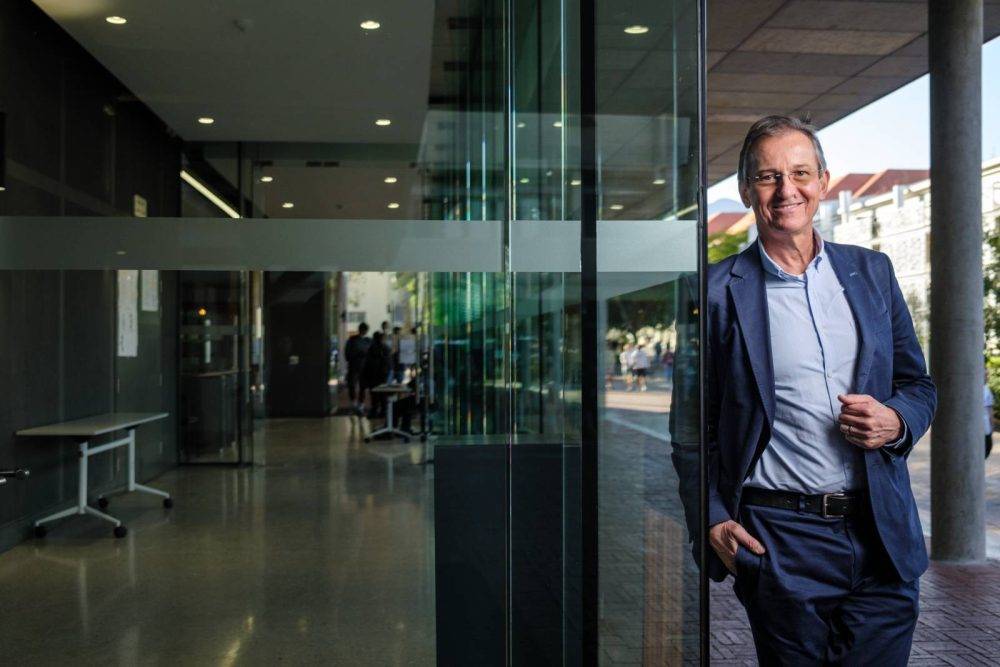
Ground Station For The Research On Top Of The Engineering Building At Stellenbosch University. (Ignus Dreyers)
Working through the night on the rooftop of the engineering building at Stellenbosch University, physicists Dr Yaseera Ismail and Professor Francesco Petruccione set a new world record by establishing the longest-ever secure quantum satellite communication link in partnership with researchers from China.
This groundbreaking research was published for the first time on 19 March in the scientific journal Nature. Ismail and Petruccione co-authored the paper, alongside several leading Chinese physicists.
“We achieved a secure communication link of 12 900km between Stellenbosch, South Africa, and Beijing, China. This surpasses the previous record of 7 600km between China and Europe,” explains Ismail, who has led the South African research team since 2020.
“Scientists around the globe are working on developing a next-generation quantum internet and what we have achieved is significant because a secure link, covering such a long distance between the Northern and Southern Hemispheres, has never been accomplished before.
“It is both fast and extremely secure,” says Petruccione, director of the National Institute for Theoretical and Computational Sciences at Stellenbosch University. Both he and Ismail work in the physics department.
During a 10-day testing period in October 2024, the rooftop of the engineering building served as a ground station equipped with a telescope and the specialised measurement devices necessary for quantum communication.

The Stellenbosch team collaborated closely with Professor Juan Yin, who leads the research at Shanghai’s University of Science and Technology of China. Another key contributor was Professor Jian-Wei Pan, who heads the quantum division at the university.
This research could fundamentally transform global data security by ensuring that classified information remains secure. Ismail explains, “Quantum encryption cannot be compromised without detection because any interference leaves a clear trace.”
Petruccione adds, “Unlike traditional encryption methods, which rely on mathematical codes that can eventually be broken, quantum communication uses single photons to encode information securely. These photons are synchronised with the Jinan-1 satellite.”

Jinan-1, developed by China, orbits Earth at around 2 000km and is visible in the night sky under clear conditions. The South African researchers conducted experiments overnight to align their equipment with the satellite’s passage. Ismail notes, “We chose the engineering building rooftop due to its flat surface and location away from city lights, which can interfere with the measurements.”
Petruccione emphasises the strong collaborative nature of the research: “In South Africa, our quantum research community is small, making international collaboration essential. Partnering with China has allowed us to exchange valuable knowledge and resources.”
The team is still in the early stages of their research. “We are planning further improvements, such as increasing the amount of secure data transmitted (key rates) over longer distances,” Ismail says. “Although our recent experiment achieved one of the highest key rates ever recorded, much more research remains to be done.”
Reflecting on this achievement, he says, “I’m thrilled by our accomplishment. Quantum technology represents the future, promising greater precision and capabilities beyond current technologies, and it has always been my passion to contribute to advancements in this exciting field.”



